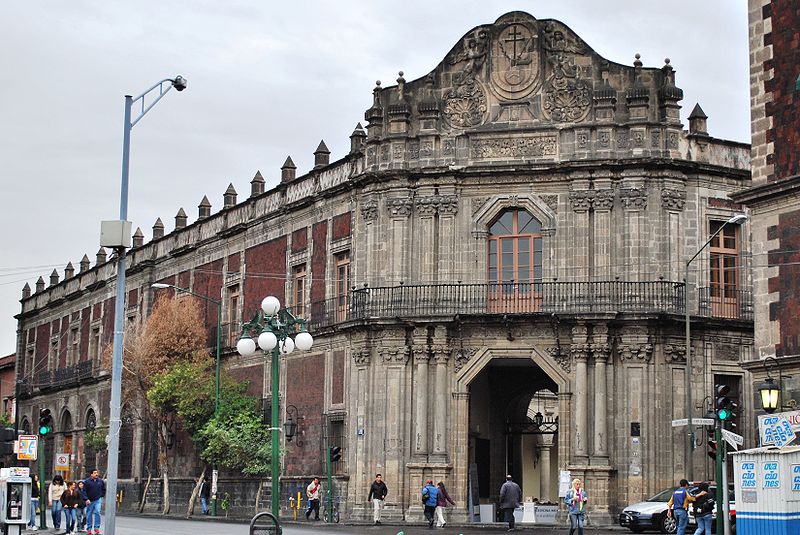
Photo: Thelmadatter on Wikimedia Commons
The Palace of the School of Medicine is today in the building which served for many years as the Palace of the Inquisition. At the corner of Republic of Brazil and Republic of Venezuela, it’s on the corner of the Plaza de Santo Domingo.
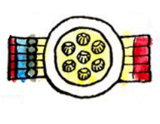
The complex’s long association with the Spanish Inquisition ended only during the Mexican War of Independence. But for that, it wasn’t easy to find another use for the building. Eventually, the National School of Medicine moved in. But, as luck would have it, in the 1950s, the National Autonomous University of Mexico (UNAM) moved to Ciudad Universitaria. UNAM held onto the building and after another lapse in time it was converted into the Museum of Mexican Medicine.
The building standing today was built between 1732 and 1736 by architect, Pedro de Arrieta. He had done significant work prior to this on the Metropolitan Cathedral, most importantly with his Chapel of All Souls, and the La Profesa Temple. He also designed the Temple of Santo Domingo just across the square.
Although Arrieta grew famous for this work, he’d died just shortly after finishing the Palace of the Inquisition, for which he received a daily salary of two pesos. Arrieta’s original two-story building had a third floor added in the 19th century.
The outside is clad in tezontle with windows and doors framed in gray-white chiluca stone. As the seat of the Holy Inquisition in the Vice-Royalty of New Spain, the Court of the Holy Inquisition was established in 1571. The Dominicans from the Temple of Santo Domingo had already been charged with inquisitorial functions in 1526.
As headquarters of the Inquisition, the building had hearing rooms, trial rooms, secret chambers, a prison, and living quarters for two inquisitors. Then popularly known as the “Casa Chata,” referring to the blunted southwest corner facing the Plaza de Santo Domingo. This is something of an innovation for normally square viceregal palace buildings.
The dungeon section of the palace was known as the “perpetual prison,” as few ever left after being confined there.
But the power and importance of the office arrived here because Martín Cortés Zúñiga, son of Hernán Cortés took part in a conspiracy to break the Vice-Royalty away from Spain already in 1566. He and his co-conspirators were tried, denounced and then tortured and otherwise punished under severe penalties. The same court went on to persecute the Carbajal family fir reverting to Judaism among others. Later they’d also sentence Miguel Hidalgo y Costilla to death, after excommunicating him. The Inquisition was only dissolved in 1821 upon the achievement of Mexican independence.
The Palace of the School of Medicine Museum holds very curious exhibitions of the history of medicine in the country. Exhibition halls include displays on reconstructive surgery, waxworks from the 19th century, histology, herbal medicine, botanical gardens, pre-Hispanic medicine, and embryology. There’s also a vice-regal portrait gallery, 19th century pharmacy display.
It’s a great way to see the building, and to learn something too. The museum is closed only on Mondays.
 The Tribunal of the Inquisition was installed in New Spain in 1571 and from then on it was located on the border of the Santo Domingo convent and within the boundaries of the plaza of the same name. The palace that remains today is the work of the architect Pedro de Arrieta, and was erected between 1732 and 1736. The airy arcade of the central courtyard boasts four corners without columns and leads to a beautiful staircase. In the offices, called "El Secreto" of the Holy Office, hundreds of prisoners were interrogated, tortured and sentenced for political and religious reasons, and in the "perpetual" prisons, hundreds more died.
The square and the atrium of Santo Domingo witnessed the famous Autos de Fe organized by the Inquisition. These were public processions of the convicts, from Santo Domingo to the Plaza Mayor, where they were confronted by judges and priests and then handed over to the civil power to execute their sentences of death, torture, mutilation, humiliation, or forced labor.
After the court was suppressed in 1816, the building was put to multiple uses. In 1854, it was acquired for the National School of Medicine and an upper floor was added. By 1950 the School of Medicine abandoned the building and began its restoration. Today, it's home to the Museum of Mexican Medicine, the University Art Gallery, and a cultural space.
The Tribunal of the Inquisition was installed in New Spain in 1571 and from then on it was located on the border of the Santo Domingo convent and within the boundaries of the plaza of the same name. The palace that remains today is the work of the architect Pedro de Arrieta, and was erected between 1732 and 1736. The airy arcade of the central courtyard boasts four corners without columns and leads to a beautiful staircase. In the offices, called "El Secreto" of the Holy Office, hundreds of prisoners were interrogated, tortured and sentenced for political and religious reasons, and in the "perpetual" prisons, hundreds more died.
The square and the atrium of Santo Domingo witnessed the famous Autos de Fe organized by the Inquisition. These were public processions of the convicts, from Santo Domingo to the Plaza Mayor, where they were confronted by judges and priests and then handed over to the civil power to execute their sentences of death, torture, mutilation, humiliation, or forced labor.
After the court was suppressed in 1816, the building was put to multiple uses. In 1854, it was acquired for the National School of Medicine and an upper floor was added. By 1950 the School of Medicine abandoned the building and began its restoration. Today, it's home to the Museum of Mexican Medicine, the University Art Gallery, and a cultural space.
Heart of México Walking Route: Santo Domingo - Santa Catarina
< < Señor de la Expiración | Santa Catarina > >
Proyecto “Corredor de Cultura Digital”.
Nombre de la investigación: Investigación Centro Histórico, Monumentos, Edificios y Puntos de Interés (2023)
Dirección de investigación y diseño de Rutas: Acércate al Centro A.C. Guadalupe Gómez Collada
Coordinación e investigación histórica: Fideicomiso del Centro histórico Dir. Maestra Loredana Montes
 palaciodemedicina@gmail.com
palaciodemedicina@gmail.com
 +52 55 5623 3123
+52 55 5623 3123
 http://pem.facmed.unam.mx/
http://pem.facmed.unam.mx/
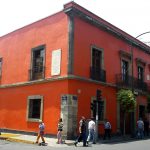
Nearest at 0.06 kms.

Nearest at 0.07 kms.

Nearest at 0.08 kms.
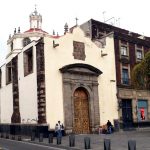
A remarkable chapel on the edge of the Plaza de Santo Domingo . . .
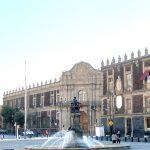
One of Central Mexico City's most important historic plazas . . .
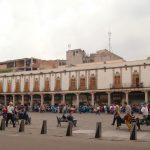
A fascinating glimpse into the very real 17th century in Mexico City.
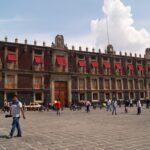
The old customs building today shows off some the SEP's extensive art collection.
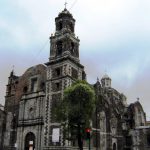
One of the most dramatic of old Baroque temples in the City, this one is the parish church of La Lagunilla.